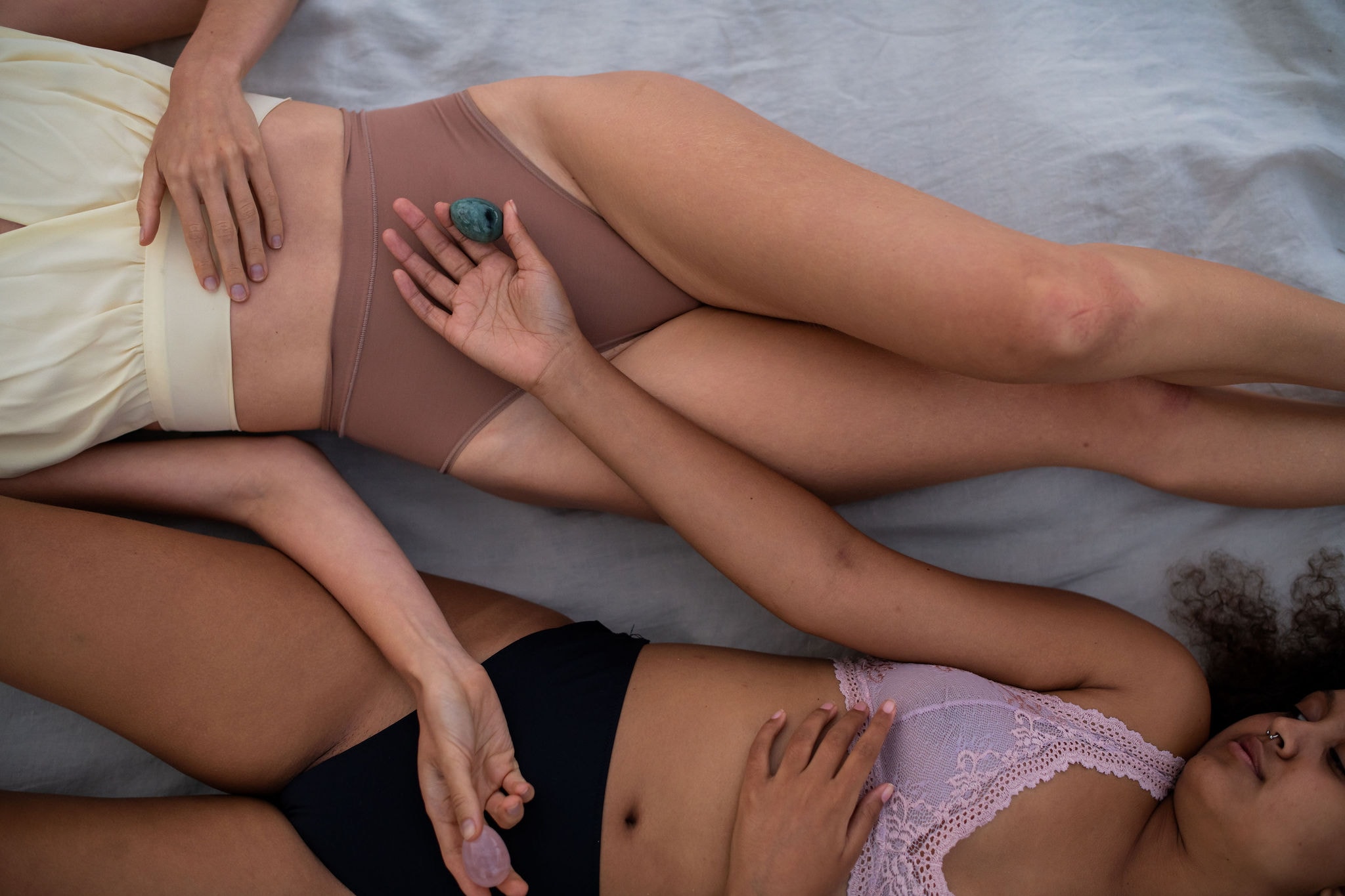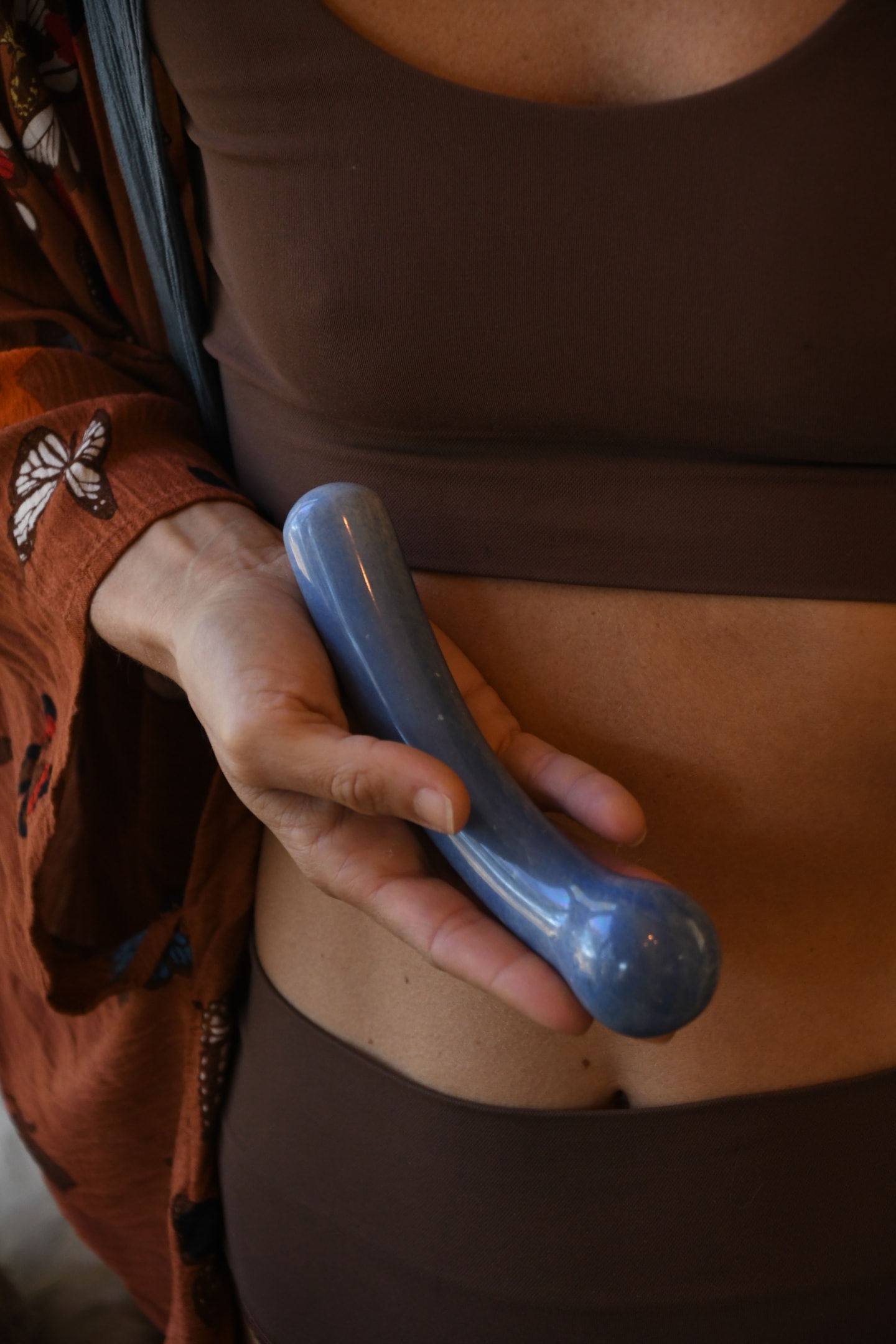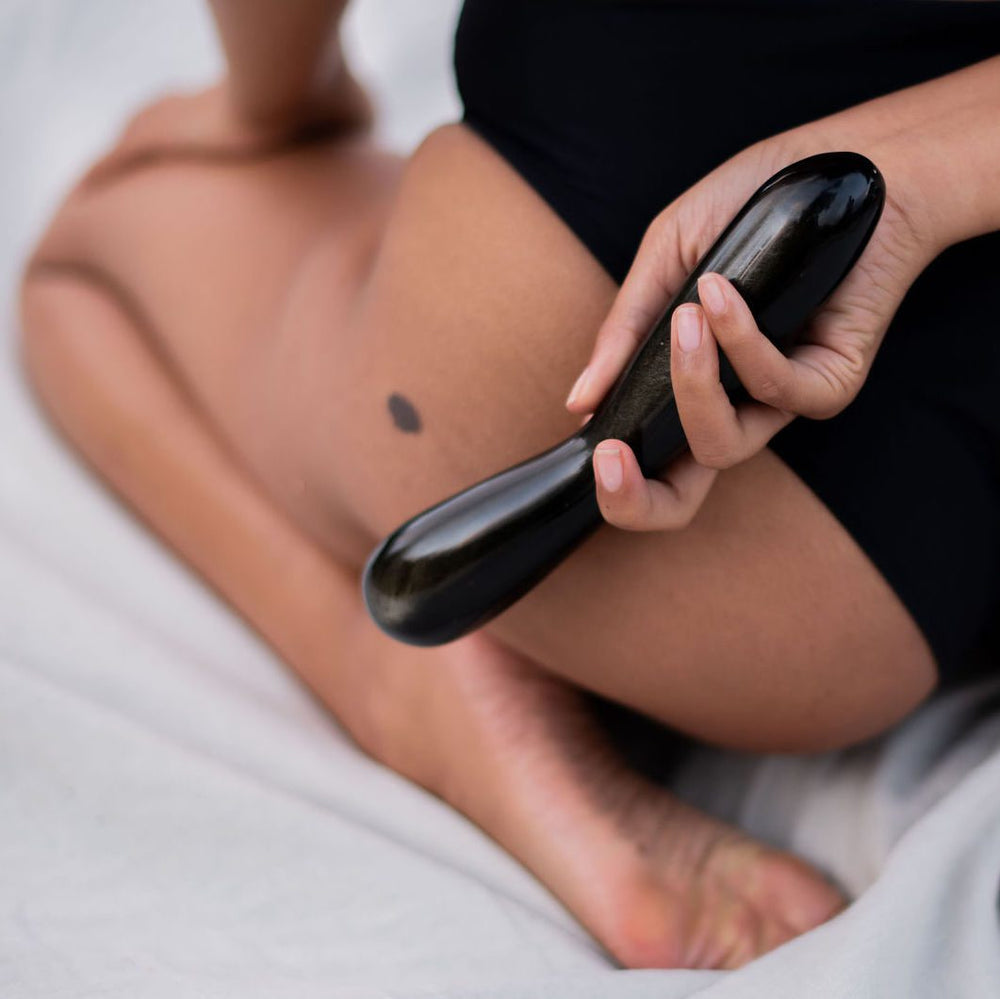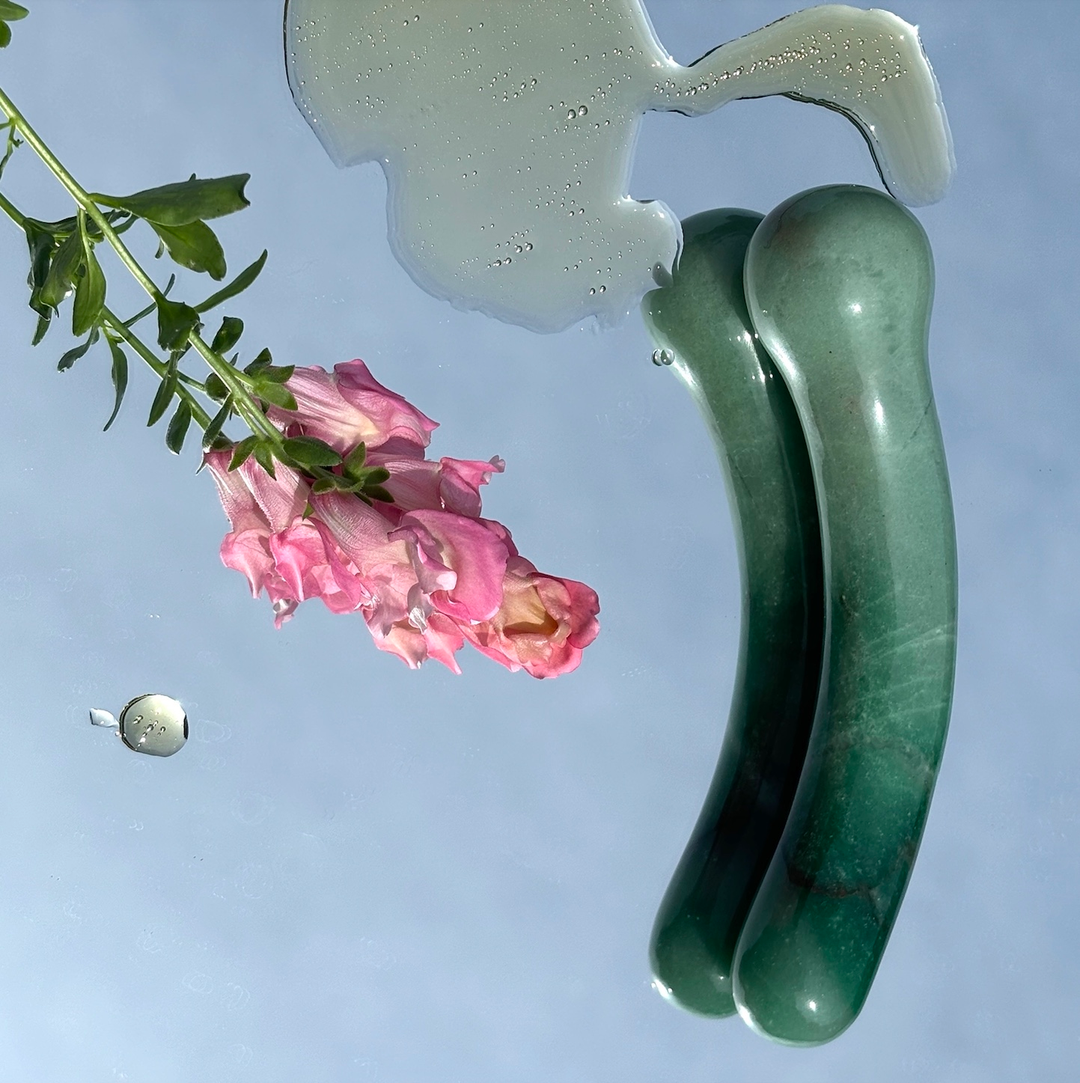Sexual Health Awareness Month: A Call to Reconnect With Your Body

Table of Contents
September is Sexual Health Awareness Month, with World Sexual Health Day recognized on September 4th. At the public level, these campaigns tend to emphasize the physical safety of sex, STI prevention, condom use, regular testing, and access to contraception. While these are essential, they barely scratch the surface of what sexual health truly means, especially for women.
For most, sexual health has been reduced to clinic visits, checklists, and vague warnings. Women learn to track cycles, avoid disease, and use protection, but not how to feel. Sexual Health Awareness Month should be more than medical compliance. It should be an invitation to return to the body. To move beyond the idea of sex as safe, into the deeper question of is sex connected?
Sexual Health Is Not Just STI Prevention
For decades, sexual health has been packaged into risk mitigation, condom use, routine screenings, birth control access. These are framed as empowerment, but the messaging rarely touches the internal world of a woman’s body, the tissue, the breath and the memory stored inside the pelvic bowl.
A woman can have “perfect” sexual health on paper and still clench every time she’s touched. She can test negative across the board, take her prescribed pills, and still cry quietly for connection internally. Clinical safety does not equal embodied safety.
What’s missing from the mainstream narrative is the felt experience. The way the cervix lifts when a woman feels relaxed, the way lubrication changes when she feels seen. How pain during sex might not be a medical issue, but a psychosomatic response to past dismissal, disassociation, or unprocessed memory.
A New Definition of Sexual Health

Self-awareness means being able to track how your body holds or releases tension throughout arousal and touch. For example, you might notice that your inner thighs stay tight, or that your jaw locks slightly when someone moves toward you. These are physical signals from your nervous system about comfort, readiness, and safety.
If you’ve never slowed down enough to feel those patterns, you’re lacking access to the language of your own body. Boundaries show up in physical behavior before they ever become words. A clear pelvic boundary might look like moving a hand away instinctively, or shifting your hips to avoid deeper penetration. If you were taught to override those cues, out of politeness, habit, or fear of disappointing someone, your body may still be trying to communicate through tension, numbness, or shutdown. Building a healthy sexual relationship with yourself means relearning how to interpret those reactions as valid and actionable.
Connection to your sexual nature is bout familiarity with your body’s pace, pressure, and limits. Some bodies need long periods of non-genital touch before arousal registers. Some need slowness around penetration, or sustained internal pressure instead of friction. Without this awareness, it’s easy to confuse discomfort for dysfunction, or to assume something’s wrong when in fact your system just hasn’t been met properly.
A Self-Intimacy Checklist: Markers of Embodied Sexual Health

Sensation & Responsiveness
A sexually healthy body responds, not just at climax, but throughout the build. You should be able to feel the texture of touch, the slow spread of warmth, the subtle shifts between curiosity, withdrawal, and yes. If you need roughness or friction just to register sensation, it may mean your nervous system is bypassing the subtle.
Many women learn to skip the in-between, to push for intensity because it’s the only thing that cuts through the numbness. But the real question is: can you feel what’s happening as it happens? Can you stay in your body during light touch, or does your awareness leave the moment it slows down?
Nervous System Regulation During Sex or Self-Touch
If the body can’t stay present while it’s being touched, regulation is off. Freezing, zoning out, holding the breath, or “blacking out” once sensation rises are all signs your system is overwhelmed and unable to process stimulation at its current pace. This directly caps your ability to feel deep pleasure.
Real orgasm, full-body, long-wave, emotionally connected release, can’t happen in a braced system. It requires your body to stay open while sensation increases. If you dissociate when something feels good, or tighten when you’re close, your body is protecting itself from what it hasn’t yet learned how to hold.
Boundary Awareness & Communication
Can you say no before your body screams it? Can you ask for what you want without softening the edges?
If you need to convince yourself you’re okay mid-act, or translate your needs into something more palatable, you’re not in your body. A healthy sexual reltionship with yourself means you let yourself know what you want in the first place.
Rituals and Tools to Support Intimate Sexual Wellness
Crystal Pleasure Wands as Tools for Nervous System Repatterning

A crystal wand is a tool for direct somatic feedback. Some women have very little internal body literacy. They don’t know how their vaginal canal responds to slow pressure because almost all penetration they’ve experienced has happened too fast, too goal-oriented, or without attunement. The result is a body that’s trained to accommodate, not to respond.
Used correctly, a crystal wand gives you a way to make contact with the inside of your body, at your own pace, without friction, without the external pressure to enjoy it, perform, or finish.
The vaginal canal, especially areas like the G-spot and cervix, is innervated by branches of the vagus and pelvic nerves, both highly responsive to emotional and physical input. When you apply sustained, pressure-based contact with a wand, you are testing your system’s capacity to stay present with
When practiced regularly, this kind of work rewires how you experience penetration. Your body begins to expect contact that is attuned, responsive, and self-paced. Over time, this can shift not only your experience of pleasure, but your baseline capacity for presence, boundaries, and self-reference during any kind of intimacy.
Self-Pleasure Ritual
-
Start without stimulation. Sit upright or lie on your back, breathe into your abdomen until you feel the front line of your body soften. Don’t touch your genitals, touch your thighs, the lower stomach. Let the pelvis be included, not targeted.
-
Notice how you touch. Fast? Inconsistent? With pressure that skips past sensation?
-
Bring in a mirror only if you can look without judgment. If you can't, that’s your practice, sitting with the visual reality of your anatomy until it becomes neutral.
-
When you do touch the vulva, track what happens in your breath. In your attention. Does your focus leave the body and jump to performance scripts? Do you clench to try to "feel something"? Do you start fantasizing before sensation even begins?
-
If you do insert a wand or finger, go slowly enough to feel changes in pressure, temperature, and grip. Most women have never had unhurried, non-penetrative internal contact. Even a single resting hold inside the vaginal wall can surface physiological information.
-
After the session, don’t write a journal entry. Write a log on what worked, what didn’t, where you left.
Education That Centers Embodiment: Courses as Support
Viva La Vagina™

Viva La Vagina™ is a practical course on body-based sexual awareness. You get clear, guided practices that show you:
-
Where your pelvic floor holds tension and how to feel that through your own hands. You learn to locate where contact feels dense, dull, or overly sensitive, and how to respond with breath, pacing, and presence.
-
How your arousal actually builds not based on external stimulation, but through sensation, time, and internal attention. You’ll notice when your body softens, when it sharpens, when it opens, and how to follow that curve without overriding it.
-
How to recognize subtle physiological cues like tightening, temperature shifts, or shallow breath. These signs show up well before you think to say yes or no, and they become the foundation of true embodied boundaries.
-
How to use crystal wands, yoni massage, and mapped touch to retrain your nervous system and build tolerance, responsiveness, and real-time awareness during sexual or intimate contact.
-
How to separate sensation from performance. You learn what pleasure feels like before it peaks. You track when you leave your body, and how to come back. You get to explore your own anatomy in a way that’s methodical, informed, and safe.
Mini Courses: Focused Lessons
Yoni Egg Guide

The Yoni Egg Guide is practical pelvic education where you’ll learn how to insert the egg without gripping, how to feel when your body is holding or releasing, and how to track real-time changes in your muscle tone and breath. This course helps you identify whether your pelvic floor is actually tight, weak, or disconnected, based on what you fee. It’s especially useful if you’ve experienced leaks, tension, numbness, or just want to know how your body holds itself from the inside.
The Art of Slow Self-Pleasure

The Art of Slow Self-Pleasure is for women who can touch themselves but often go through the motions, rushing, spacing out, or reaching for climax out of habit. This course guides you back to the beginning of your arousal pattern, before anything is “supposed” to happen. You’ll learn to wait until your body is ready, feel the moment desire actually stirs, and stay connected throughout. It helps retrain your nervous system to feel safe with slow build-up, which supports deeper pleasure and reduces dependence on external stimulation or performance patterns.
Self-Yoni Massage

Self-Yoni Massage teaches you how to explore your vaginal canal with your own hands, slowly and without pressure to feel anything specific. You’ll learn how to apply gentle internal touch, hold contact where it feels dull or tense, and wait until your body gives feedback. This helps with developing proprioception and intimacy with your internal tissue. The course helps you recognize where your body holds emotion, what areas feel alert or asleep, and how to stay with yourself through sensation instead of avoiding it.
Conclusion
Mainstream Sexual Health Awareness Month focuses on prevention, test regularly, practice safe sex, know the risks. It’s built around public health messaging that rarely touches the internal reality of a woman’s body.
What’s often missing is the private, physical experience, the tension held in the pelvis, the absence of sensation, the disconnection that becomes normal over time. Most women aren’t taught to notice those things, let alone work with them.
This month can offer something more, a chance to shift the focus inward toward what your own body is telling you. Sexual health is about presence and what lives in your tissue, your breath, your timing.
FAQ
September is recognized as Sexual Health Awareness Month, a time meant to spotlight education, resources, and open conversations about sexual health issues. While much of the messaging focuses on STI prevention, contraception, and screenings, this month can also be an invitation for women to explore the internal, emotional, and body-based aspects of their sexual well-being.
Held on September 4th, World Sexual Health Day was established by the World Association for Sexual Health to promote open dialogue and increase global awareness around sexuality, sexual rights, and the importance of healthy sexual relationships. Rather than only focusing on external risks or access to services, it’s a powerful opportunity to reflect on how your own body feels during intimacy, and whether your sexual activity is driven by connection or habit.
STI Awareness Month is observed in April and is typically led by public health agencies to promote education around sexually transmitted infections, prevention tools like condoms, and encouraging regular testing. While this form of awareness is vital, especially for sexually active individuals, it often leaves out the emotional side of sex, the impact of disconnection, trauma, or numbness that can go unspoken in clinical settings. Comprehensive sexual health must include the nervous system, emotional awareness, and a woman's internal sense of safety and readiness.
Related Articles















Leave a comment